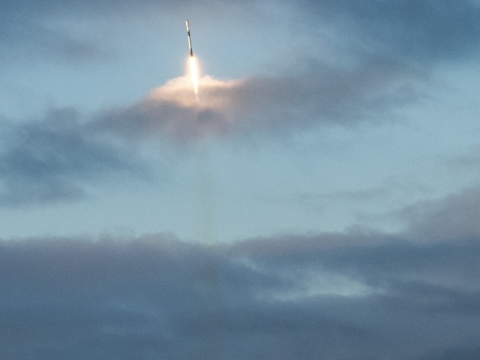State Department Seeks Expanded UAV Security Fleet
The U.S. State Department wants to spend as much as $1 billion over the next five years to expand its fleet of unmanned aerial vehicles (UAVs) to be used primarily for embassy security and to protect transportation routes.
The agency’s formal request for proposal (RFP), issued in March, seeks bids for “real-time air surveillance of fixed installations, proposed movement routes, and special events thereby improving security in high-threat or potentially high-threat environments.”
The department’s proposal calls for a five-year, indefinite-delivery, indefinite-quantity contract to provide both low- and high-altitude drones. Contractors would own the UAVs and would also provide navigators, analysts, support and maintenance. The UAVs would be deployed on a task-order basis.
Officials explain that there are practical reasons for contracting out the procurement of these drones.
“Often the department relies on contractors to provide personnel having specialized technical qualifications and skills, as well as equipment that are not typically available from within,” they explain via email, adding that the UAV contractor will be expected to work under the supervision of government employees.
The State Department already uses a small number of UAVs in Iraq to provide security for the U.S. embassy in Baghdad and was criticized by Iraqi officials for doing so last January. Asked whether department policies for the use of these drones will include coordination and approval by host nations, officials said only, “The State Department works closely with each host nation on a variety of physical and procedural security issues.”
Regarding the projected mission for the UAVs, State Department officials said, “In the interest of operational security, the department does not divulge details regarding our security programs.”
In a follow-up, officials acknowledged that, “the program involves using small unmanned aerial vehicles to garner information on the ground that will help us better protect our personnel. Operation of the Unmanned Aerial Vehicle program is limited in scope and is only considered for critical threat environments.”
Agency officials say that in shaping the State Department UAV program, they have been working closely with the Defense Department to learn from the military services’ mission experience with UAVs.
With that in mind, the State Department’s procurement solicitation calls for two different classes of drones using U.S. Air Force tier specifications. Asked why Air Force tier UAVs were specified, State Department officials said, “We determined through a review of the existing specifications that the Air Force specification fits our anticipated requirements.”
The RFP calls for Air Force Tier I hand-launched UAVs, similar to the Gnat 750, which operate at altitudes of 750 to 2,000 feet. These UAVs would be equipped with video and heat sensors, downlinking still and streaming video, and utilizing Global Positioning System (GPS) navigation. They would have a range of 250 miles.
The RFP also specifies Air Force Tier II UAVs, similar to the Predator, capable of operating at a maximum altitude of 18,000 feet with a range of 250 miles. They would also be capable of downlinking still and streaming video, and use GPS.
While the drones will be used for security purposes, officials say, “The UAVs being utilized by the State Department are not armed nor are they capable of being armed.” They also said that they would not operate drone aircraft in conjunction with those used by American military forces. The department also has no plans to use drones for humanitarian relief efforts.
The State Department’s 2011 annual report says that its Diplomatic Security Bureau had tested UAVs in December 2010 and was planning to deploy them to Iraq late last year in time for the departure of U.S. troops from the country.
As many as 70 companies have expressed interest in the State Department RFP, according to the procurement solicitation posted on the website FedBizOps.gov. They include UAV manufacturer General Atomics, numerous aerospace companies, such as BAE Systems, and systems integrators, such as Computer Sciences Corporation, General Dynamics, L-3 and Lockheed Martin.
State Department contracting officials have extended the deadline for bids on the UAV contract to April 23.
A contract award is expected within 45 days of the contract submission deadline.



Comments